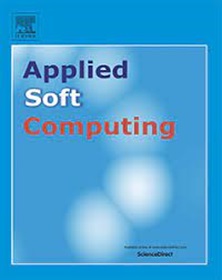Spatial-temporal analysis and trend prediction of regional crop disease based on electronic medical records
IF 7.2
1区 计算机科学
Q1 COMPUTER SCIENCE, ARTIFICIAL INTELLIGENCE
引用次数: 0
Abstract
Intelligent diagnosis of individual crop diseases has matured. How to understand the evolution patterns and predict regional disease trends remains a significant challenge. Plant Electronic Medical Records (PEMRs) offer valuable spatial-temporal characteristics about crop diseases, presenting a new opportunity for predicting the occurrence of regional diseases. In this study, we used a large prescription database from Beijing (2018–2021) to reframe regional disease prediction as a time series forecasting task. Firstly, to analyze spatial-temporal evolution patterns, we use ArcGIS to extract key information and identify potential connections between different disease occurrence points. Then, we developed a novel deep learning combined model SV-CBA, which combines Seasonal and Trend decomposition (STL) with Variational Mode Decomposition (VMD) to identify trend, seasonal, and residual components, and re-decomposes the residuals. STL-VMD can capture long-term trends and periodic variations while managing nonlinear and volatile characteristics. The CNN-BiLSTM-Attention model calculates disease trends by linearly integrating predictions of each sub-series. To reduce computational complexity while maintaining predictive performance, we propose an improved simplified attention mechanism. Our model demonstrates superior performance in both comparative and ablation experiments using the PEMRs dataset, outperforming numerous other models. This study provides accurate disease trend predictions, aiding farmers and regional managers in agricultural production management.
基于电子病历的区域作物疾病时空分析和趋势预测
单个作物病害的智能诊断已经成熟。如何了解演变模式并预测区域性病害趋势仍是一项重大挑战。植物电子病历(PEMR)提供了宝贵的农作物病害时空特征,为预测区域性病害的发生提供了新的机遇。在本研究中,我们利用北京市(2018-2021 年)的大型处方数据库,将区域病害预测重构为一项时间序列预测任务。首先,为了分析时空演变模式,我们使用 ArcGIS 提取关键信息,识别不同疾病发生点之间的潜在联系。然后,我们开发了一种新型深度学习组合模型 SV-CBA,它将季节和趋势分解(STL)与变异模式分解(VMD)相结合,以识别趋势、季节和残差成分,并对残差进行再分解。STL-VMD 可以捕捉长期趋势和周期性变化,同时管理非线性和波动特性。CNN-BiLSTM-Attention 模型通过对每个子序列的预测进行线性整合来计算疾病趋势。为了在保持预测性能的同时降低计算复杂性,我们提出了一种改进的简化注意力机制。我们的模型在使用 PEMRs 数据集进行的对比实验和消融实验中都表现出了卓越的性能,超过了许多其他模型。这项研究提供了准确的疾病趋势预测,有助于农民和地区管理者进行农业生产管理。
本文章由计算机程序翻译,如有差异,请以英文原文为准。
求助全文
约1分钟内获得全文
求助全文
来源期刊

Applied Soft Computing
工程技术-计算机:跨学科应用
CiteScore
15.80
自引率
6.90%
发文量
874
审稿时长
10.9 months
期刊介绍:
Applied Soft Computing is an international journal promoting an integrated view of soft computing to solve real life problems.The focus is to publish the highest quality research in application and convergence of the areas of Fuzzy Logic, Neural Networks, Evolutionary Computing, Rough Sets and other similar techniques to address real world complexities.
Applied Soft Computing is a rolling publication: articles are published as soon as the editor-in-chief has accepted them. Therefore, the web site will continuously be updated with new articles and the publication time will be short.
 求助内容:
求助内容: 应助结果提醒方式:
应助结果提醒方式:


